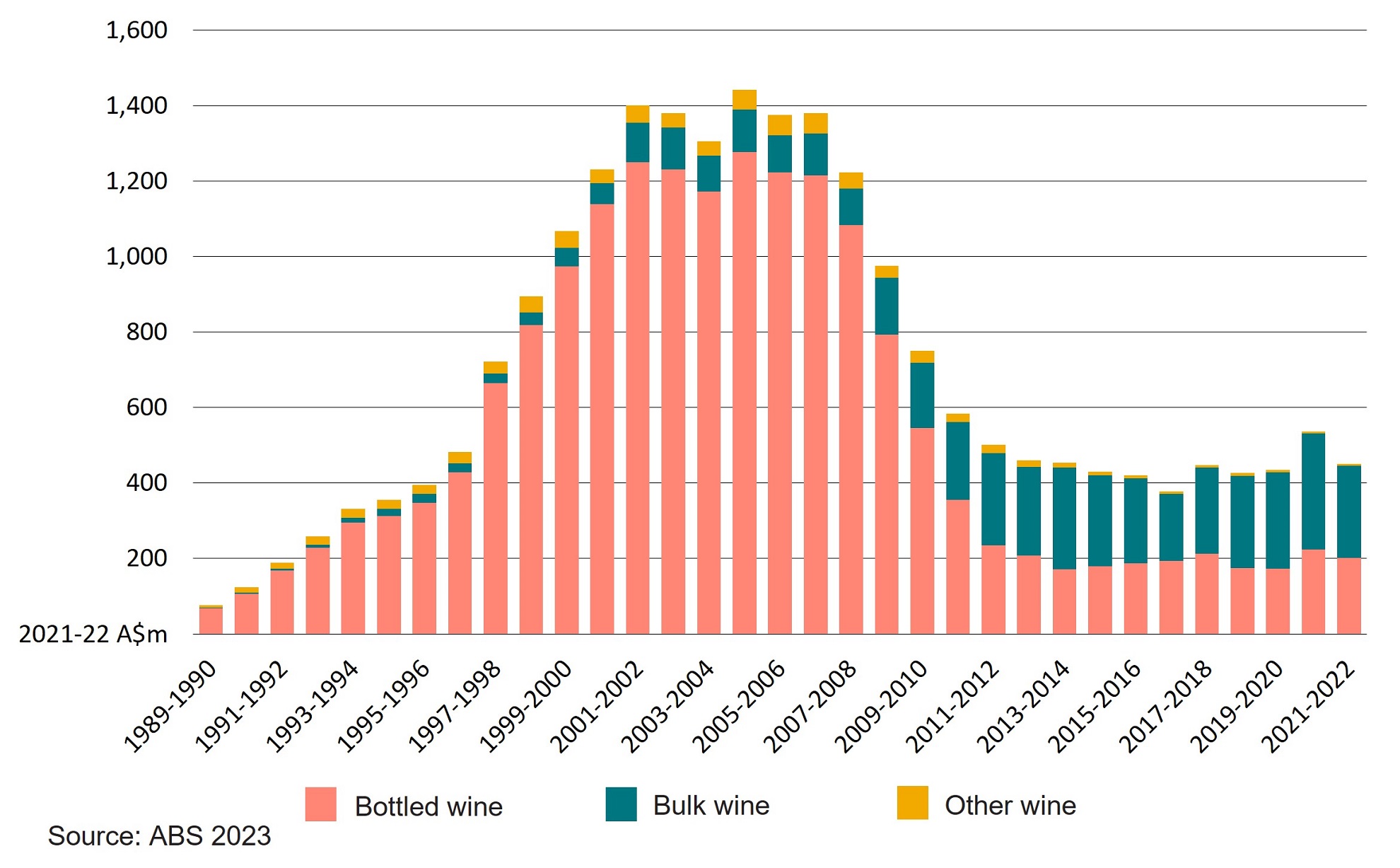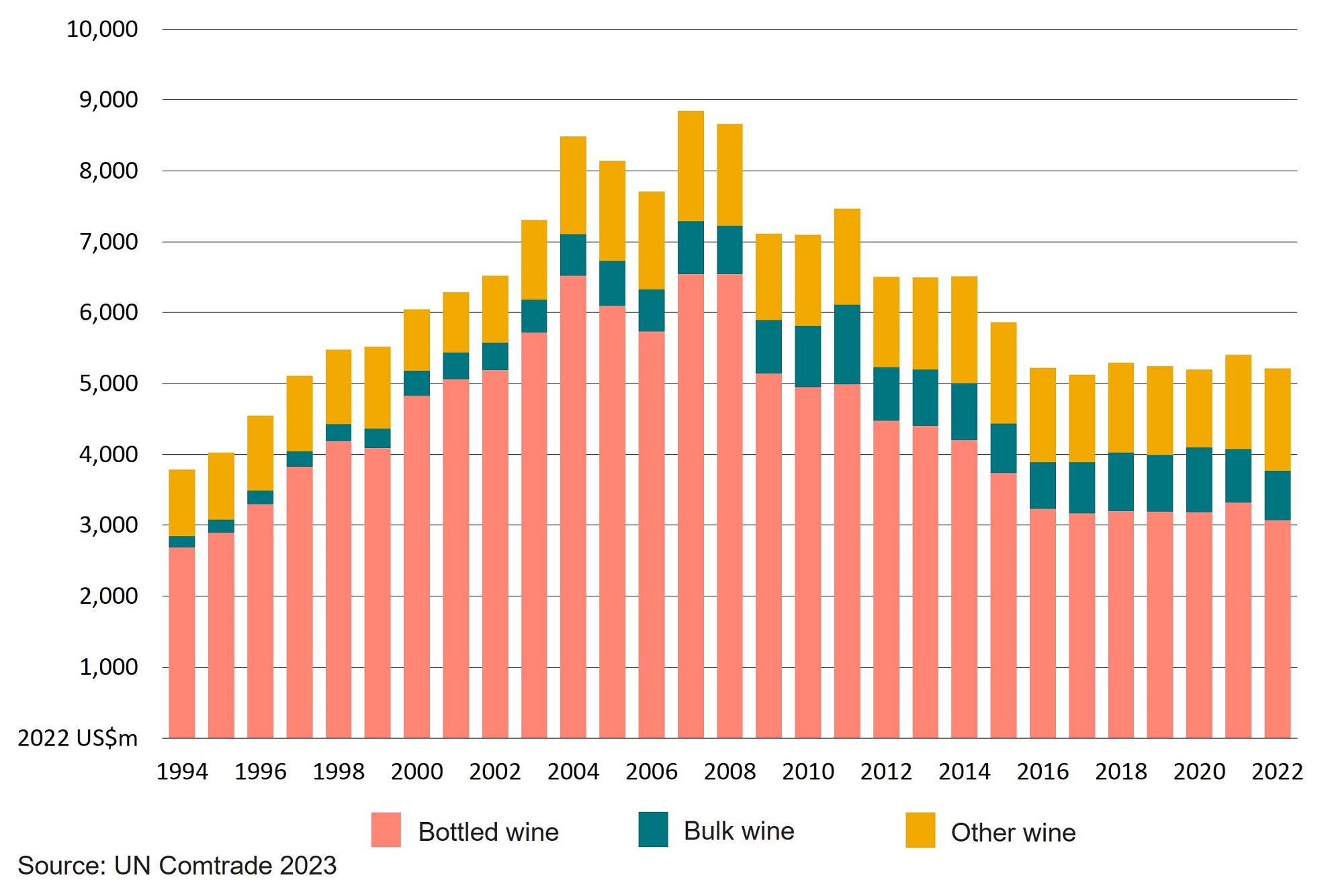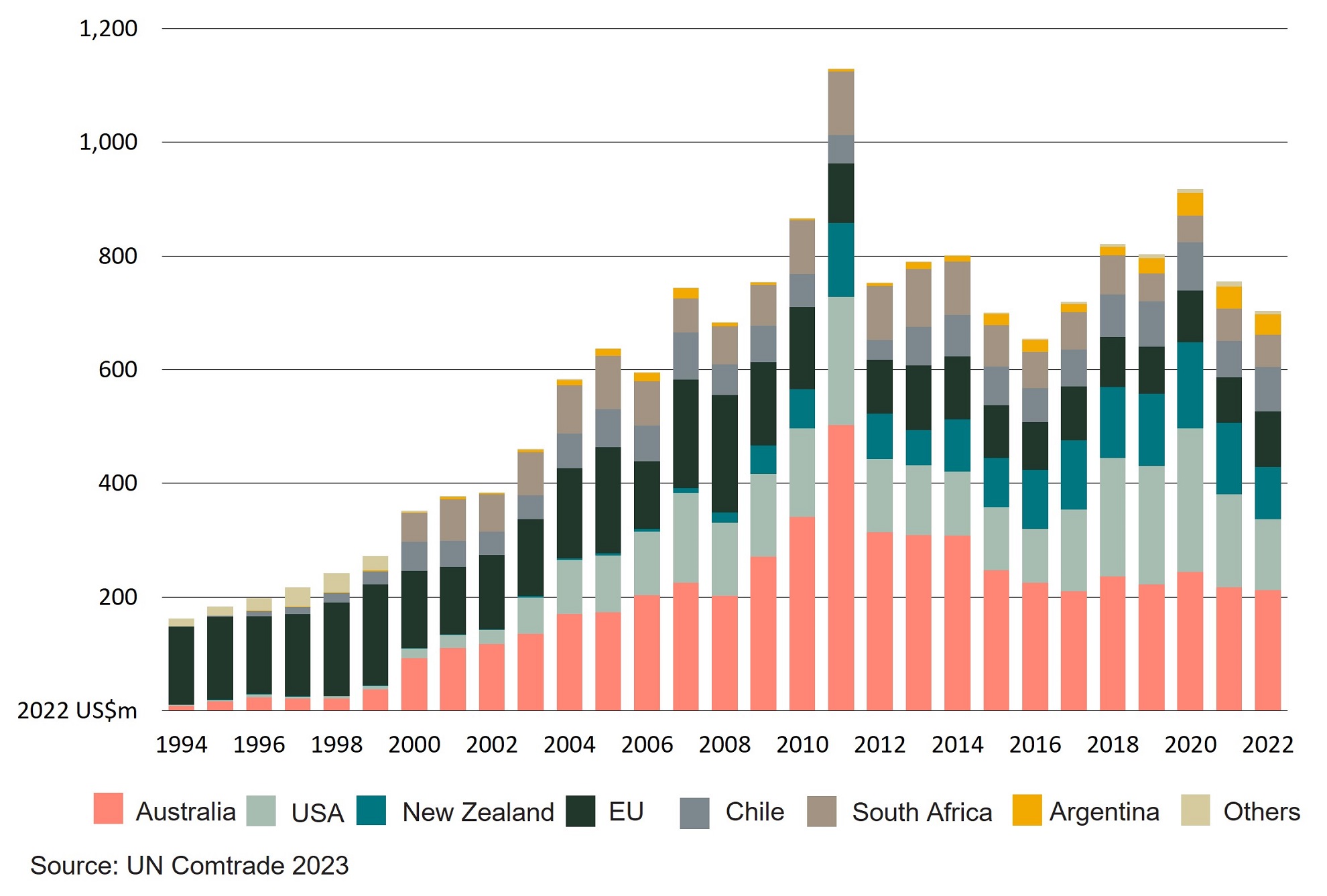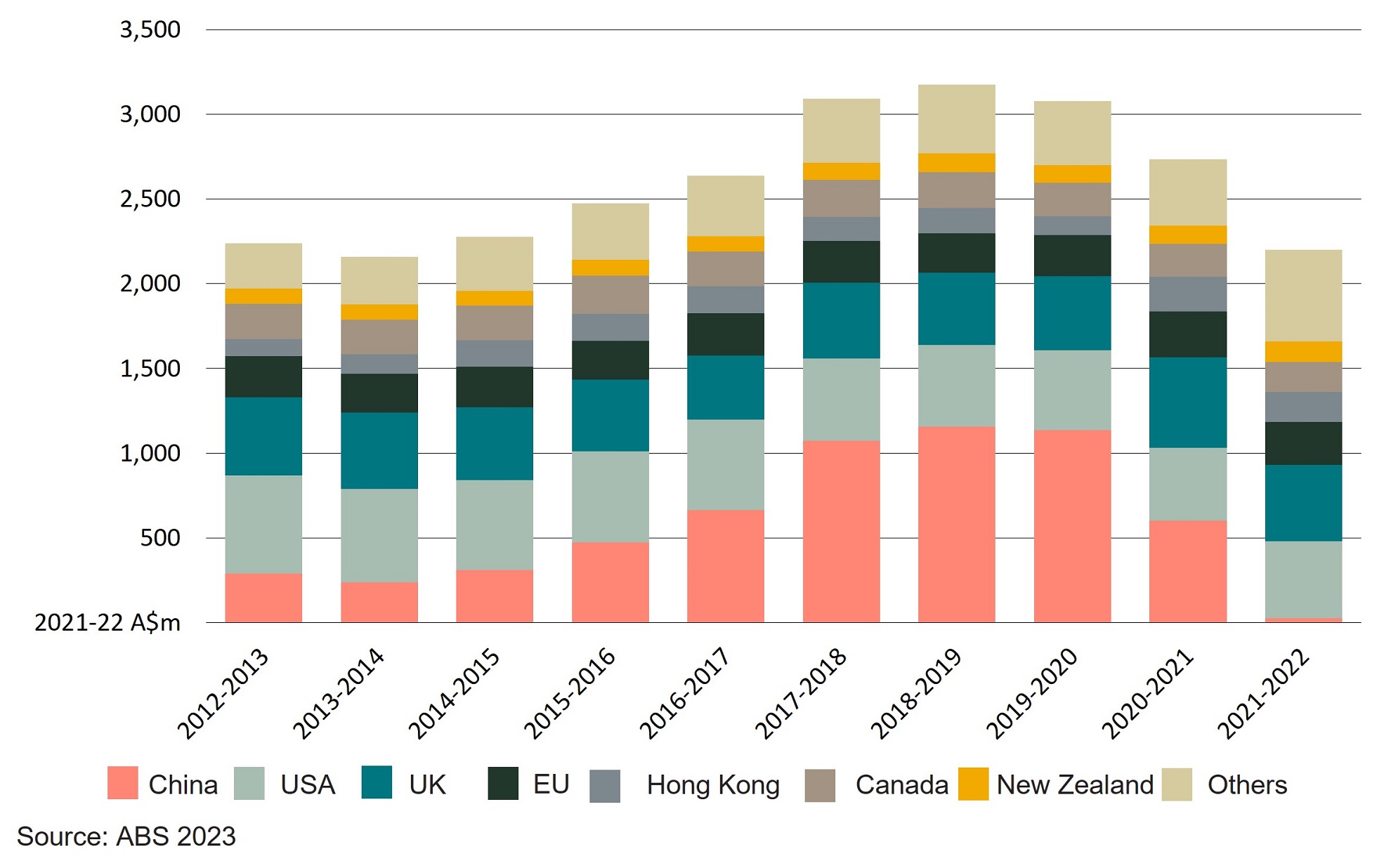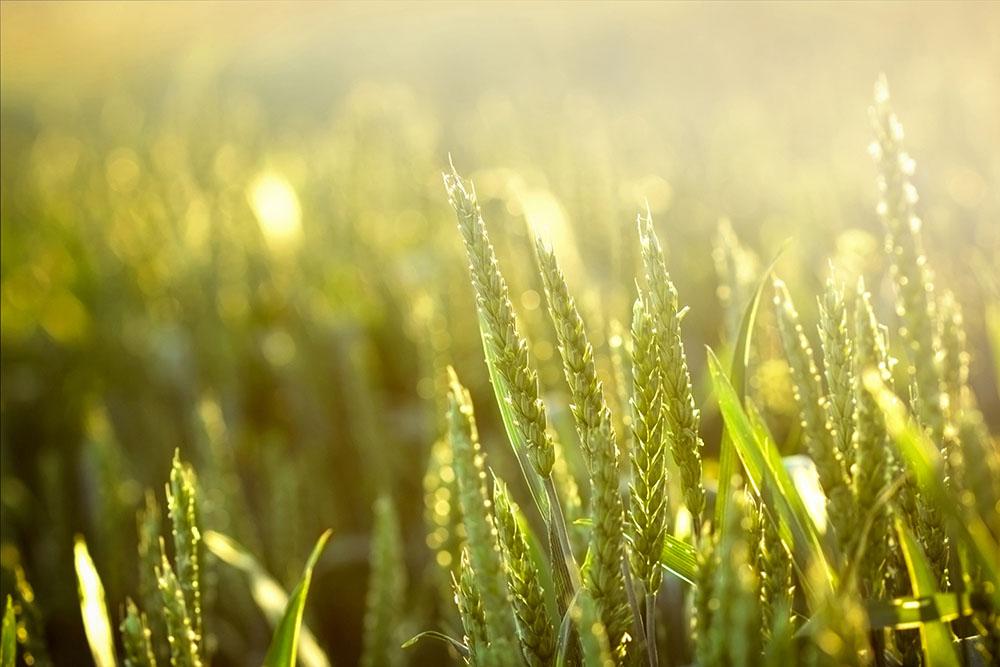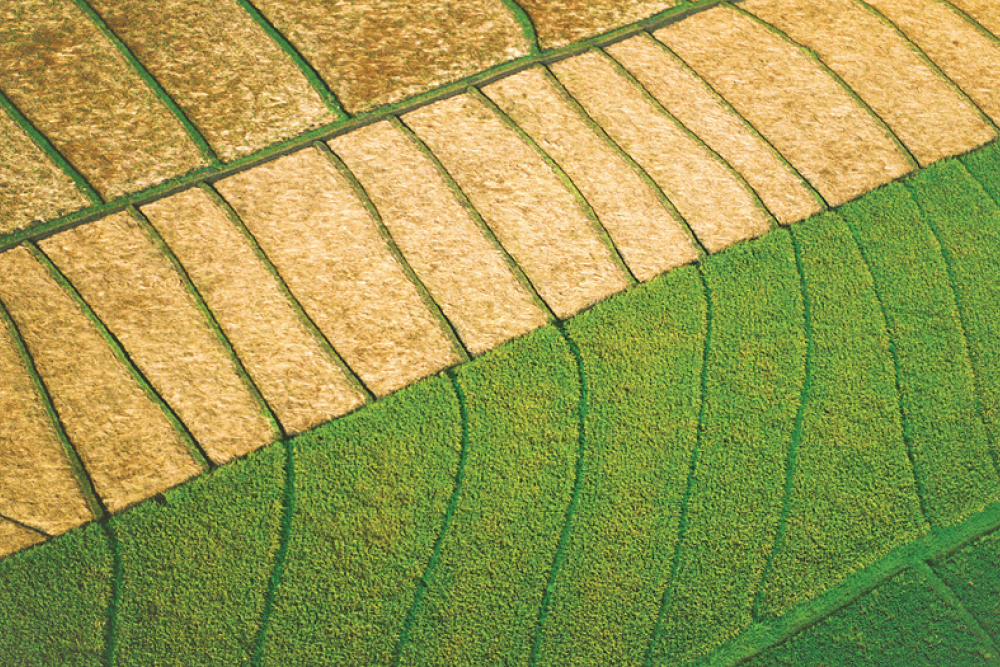The Australia-United Kingdom Free Trade Agreement (A-UKFTA) entered into force on 31 May 2023.
The A-UKFTA immediately eliminates tariffs on all Australian wine exports to the UK. Before the agreement, Australian wine entered the UK at the UK Global Tariff (UKGT) rate. The UKGT replaced the EU's Common External Tariff on 1 January 2021.
Removing tariffs will reduce costs and provide more opportunities for Australian exporters in the UK’s US$5.27 billion wine import market – one of the world’s largest. For UK consumers, these opportunities will increase further the diversity and quality of wines available in the UK.
Implications for Australian wine exporters
Before the A-UKFTA, Australian bottled and bulk wine entered the UK market under a duty rate which ranged from GBP£0.10 to GBP£0.26 per litre (Table 1). These tariffs made Australian wine more expensive to import when compared to competitors who enjoyed tariff free access, such as EU producers.
The A-UKFTA reduced the tariff on Australian wine to zero at entry into force.
Producers and exporters can check their new tariff rates using DFAT’s FTA portal.
| Exporter | UKGTa | 2021 | 2023 | FTA EIFb |
|---|---|---|---|---|
| Australia | 0.12-0.26 £/l | 0.12-0.26 £/l | 0 | 31 May 2023 |
| European Union | 0 | 0 | 0 | 1 May 2021c |
| New Zealand | 0.12-0.26 £/l | 0.12-0.26 £/l | 0 | 31 May 2023 |
| United States | 0.12-0.26 £/l | 0.12-0.26 £/l | 0.12-0.26 £/l | No FTAd |
| Chile | 0.12-0.26 £/l | 0 | 0 | 1 January 2021 |
a UK Global Tariff
b Free Trade Agreement (or similar) Entry into Force.
c Tariffs on EU wine imports were not enforced between the UK’s exit from the EU and the EU-UKFTA.
d Alcoholic beverage tariffs have been affected by trade disputes between the US, EU and UK, see US-EU-UK tariffs 2022.
Source: DFAT FTA Portal 2023; The UK FTAs 2023
Australian wine exports to the UK
Australian wine exports to the UK increased continuously between 1989-90 and the mid-2000s. The value of wine exports peaked at A$961 million in 2004-05. This is equivalent to A$1.4 billion in 2021–22 Australian dollars (Figure 1). At the time, more than 35% of the value of Australian wine exports were going to the UK.
Australian wine exports to the UK fell between 2006–07 and 2012–13 (Figure 1). This was primarily due to a fall in total Australian wine exports and the growing diversity of export opportunities for Australian wine in other markets.
The value of Australian wine exports to the UK has been relatively stable over the last decade. Between 2019–20 and 2021–22, Australia exported an average of A$474.2 million of wine to the UK (18% of Australia’s total wine exports). The UK was Australia’s top export market by volume in the year ending March 2023.
Figure 1 – Value of Australian wine exports to the UK, 1989–90 to 2021–22
Most of Australia’s wine exports to the UK now occur in bulk form (such as in tanks, kegs or barrels). The wine is then bottled in the UK before being sold in the UK or re-exported. Bulk wine usually receives a lower price than bottled wine, however, overheads for packaging and shipping costs are lower. Typically, bulk wine is produced by large wine producers which exercise economies of scale by purchasing large volumes of less expensive wine grapes and producing in large volumes.
Shipping wine in bulk is also estimated to reduce CO₂ emissions by up to 40% when compared to wine shipped in bottles. Australia and the UK are parties to the Agreement on Trade in Wine between the Government of the United Kingdom of Great Britain and Northern Ireland and the Government of Australia. This bilateral agreement provides a framework for the facilitation and promotion of trade in wine in Australia and the UK.
Imports of wine by the UK
Imports by packaging type
The UK imports both bottled and bulk wine. Between 2020 and 2022, bottled wine comprised 61% of the value (US$5.27b) and 48% of the volume (1.29ML) of the UK’s wine imports. The average import unit value of bottled wine was US$4.13/l, compared to US$1.36/l for bulk wine (UN Comtrade 2023).
The value of the UK’s wine imports increased between 1994 to 2007, before falling to around US$5 billion over the past 5 years (Figure 2). This is partly due to the increase in bulk wine’s share of total UK wine imports by volume (UN Comtrade 2023). The value of ‘other wine’ imports, including sparkling wine, vermouth, has remained relatively stable.
Figure 2 – Value of UK wine imports from the world by type, 1994 to 2022
Imports by partner
Most of the UK’s bottled wine imports come from the EU. France is the largest supplier (35%), followed by Italy (17%) and Spain (10%) (UN Comtrade 2023). New Zealand (7%), Chile (6%), Australia (5%) and the United States (3%) are the main non-EU members that export bottled wine to the UK.
Despite the long distance to market, Australian bottled wine imports are relatively inexpensive in the UK. Between 2020 and 2022, the average landed price of Australian bottled wine imported into the UK was US$3.56 per litre. This was lower than the average price of imports from France, Italy and Spain (US$4.42/l) and New Zealand (US$5.80/l).
Australia is the UK’s largest supplier of bulk wine (Figure 3). Australia accounted for 28% of UK’s US$792.2 million bulk wine import market (per annum) between 2020 and 2022 (UN Comtrade 2023). Non-EU countries, including the United States (23%), New Zealand (16%) and Chile (10%) were the other major bulk wine suppliers.
Figure 3 – Value of the UK’s bulk wine imports by destination, 1994 to 2022
Australian wine industry
Grape and wine production is one of Australia’s largest rural industries. In 2021 – 22, Australia crushed 1.7 million tonnes of wine grapes and produced 1.3 billion litres of wine (Wine Australia 2023; ABARES 2023). Wine was Australia’s eighth largest agricultural export, valued at close to
A$2.2 billion in 2021–22.
Wine grapes are produced in all Australian states. In 2021 – 22, South Australia accounted for 55% of total wine grape production (A$852.6m), followed by New South Wales (16%) and Victoria (15%).
The value of Australian wine exports grew steadily from A$2.2 billion in 2013–14 to A$3.2 billion (2021–22 Australian dollars) in 2018–19 (ABS 2023). The value of exports has fallen in recent years. This was initially due to the imposition of tariffs by China. COVID-19’s impact on the global hospitality sector compounded this challenge by reducing the demand for wine sold in restaurants.
In 2021–22, Australia exported wine to 96 markets. The main destinations were the United States (21%), the UK (20%), the EU (11.4%) and Hong Kong (8%) (Figure 4). Exports to countries in the ASEAN region, particularly Singapore, Malaysia and Thailand, have also grown. In 2021–22, 14% of Australian wine exports went to ASEAN, up from 6% in 2019–20.
The Australian wine industry is focussed on building new wine exports markets. This includes emerging markets in the ASEAN region and capitalising on new agreements with the UK and India.
Figure 4 - Value of Australian wine exports to the world, 2012–13 and 2021–22
Resources
The Department of Foreign Affairs and Trade has guidance material and a business guide about the A-UKFTA.
Austrade has more information about Doing business in United Kingdom.
The Australian Government’s network of Agriculture Counsellors provided information for this article. More information about the Agriculture Counsellor network, including contact details, are available on the Department of Agriculture, Fisheries and Forestry website.
Go further, faster with Austrade
Go to Austrade’s Go Global Toolkit to learn the export basics, find the right markets and understand market requirements.
Connect with us
Follow our @AusAgTrade Twitter account for all your #TradeTips and Market Intel.
Subscribe to our monthly Agriculture Market Intelligence Insights newsletter

